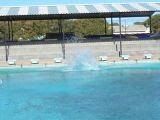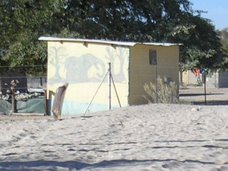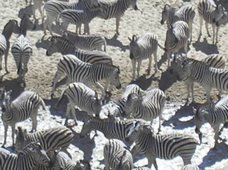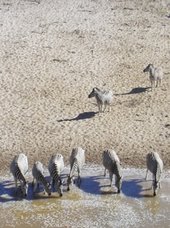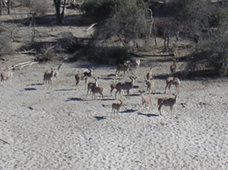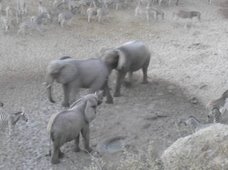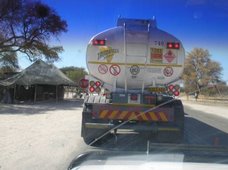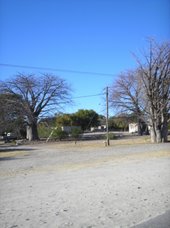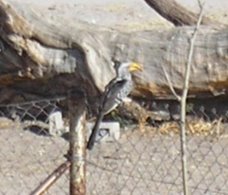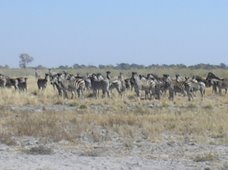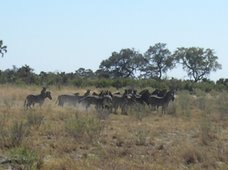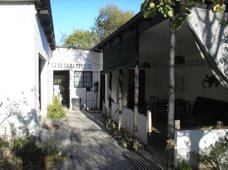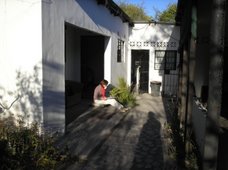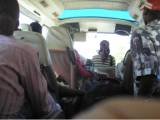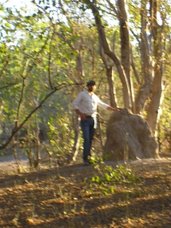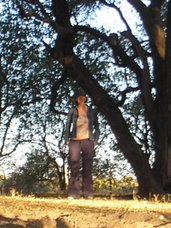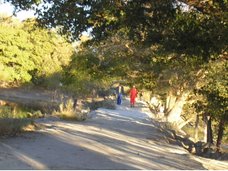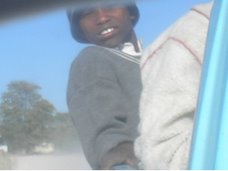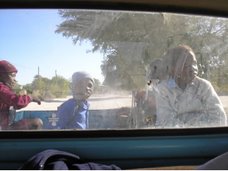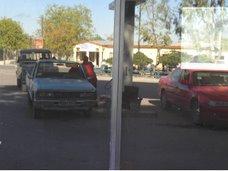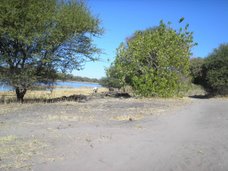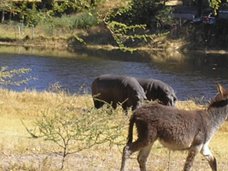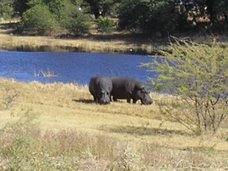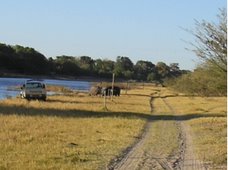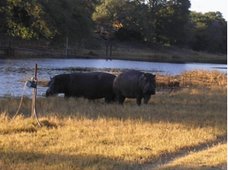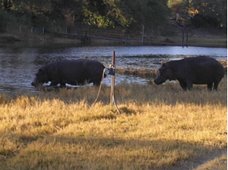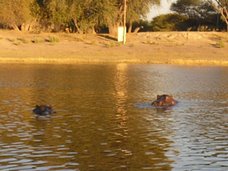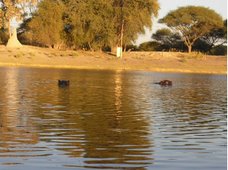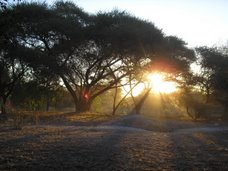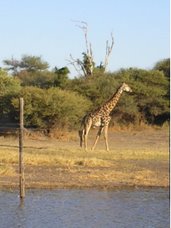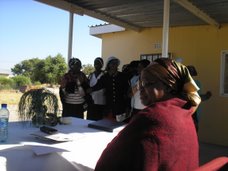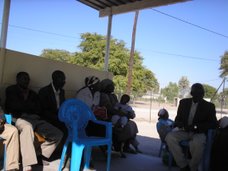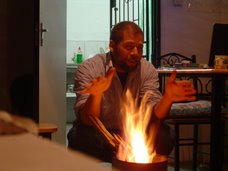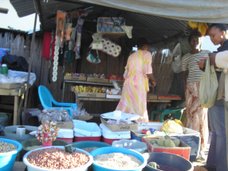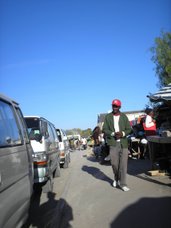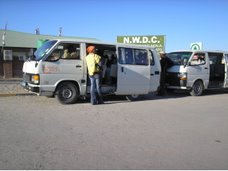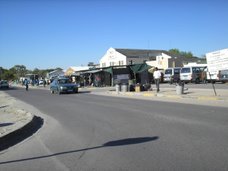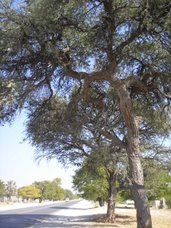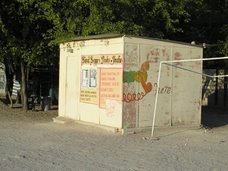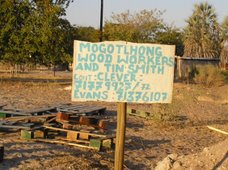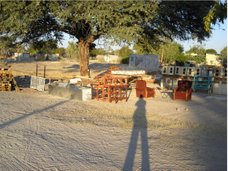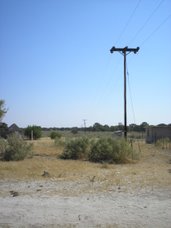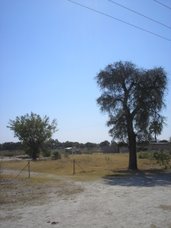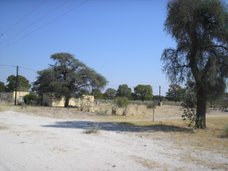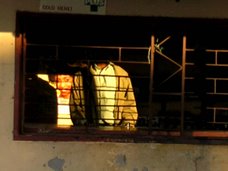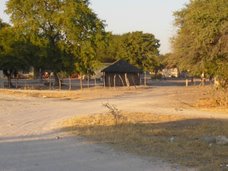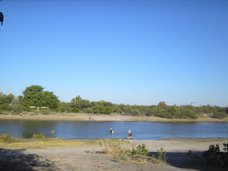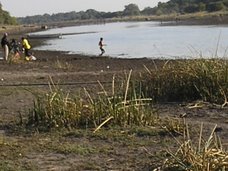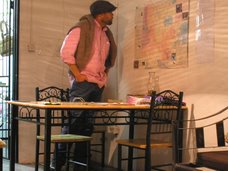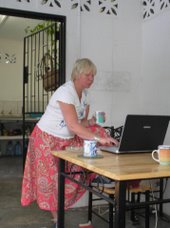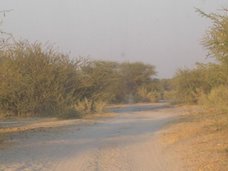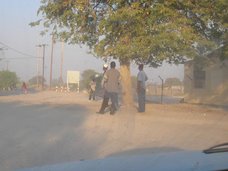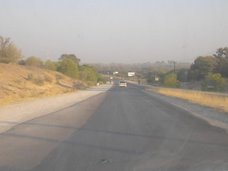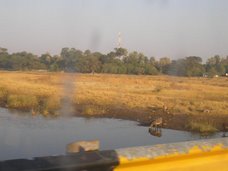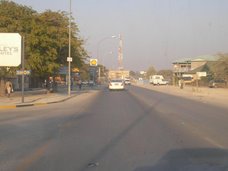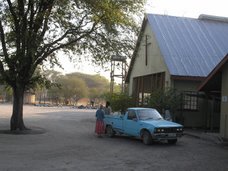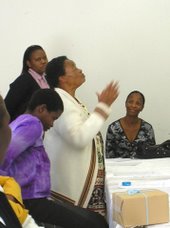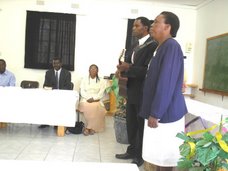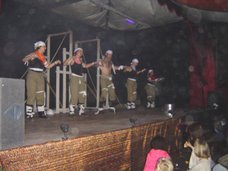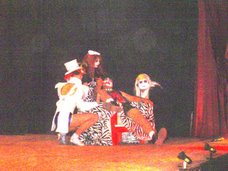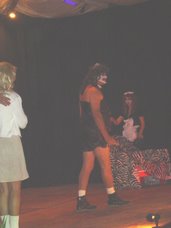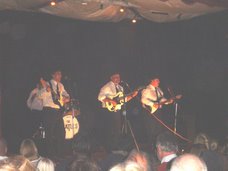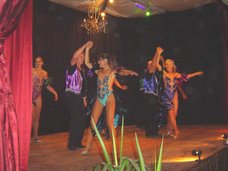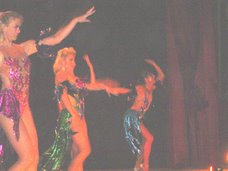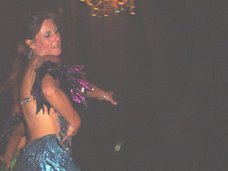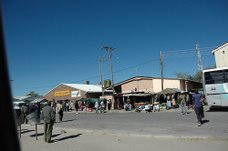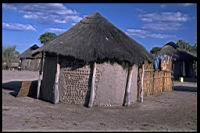Gentle readers, this may be my last written from Botswana as I am due to leave next Sunday to resume my practice in London. I’m sad to be leaving as I am just beginning to get to know this little part of this great country and excited at the same time as I ‘ll be travelling back down to Johannesburg by bus and so have time to see some more new things on my way home.
We’ve had another wonderful weekend as we traveled south west, past Sehitwa down to D’Quae Q’Are to the Kuru San dance festival. Once again we took to the road with the remarkable Marty who pointed out to us the Thamalakawe fault along which our river runs and the ancient shores and sand-bars of paeleo Lake Ngami.
We saw some very fascinating things concerning ubuntu, the heritage of the ancestors, the ancient and contemporary landscape and Botswana’s delicate relationship with water. As we left Maun and and passed the Hereo village Marty began to describe the intricacies of Ngamiland’s subteranean waters. Lake Ngami has been dry for about 160 years. Sehitwa is situated on it’s shores and on the map appears next to a large expanse of blue. However, in reality the best you could expect to see was a few muddy pools. The most striking evidence of the absence of this water is the dead Lead wood and acacia trees. These trees are incredibly slow growing and those of any reasonable size are likely to be around 150 years old. Along the road as we passed out of Maun we could see a great many of these trees recently dead indicating that there is gradually less and less water flowing underground.
Further on we came to a great Baobab tree. Again, in this desert region these trees are incredibly slow growing and the one we saw could be up to 2000 years old. It’s smooth bark felt like stone and in it’s branches were growing it’s furry fruit. Marty pointed out to us a square outline on it’s trunk. This scar showed where people had stripped the bark in order to make cloth at least 300 years ago. This remonds me of the artefact we found when we gathered wood on the way back from seeing the waters of the Boteti flow again.
So, there we are, just off the old Samedupi road colllecting firewood when we come across a bleached white piece of timber, deeply weathered, about 1.5 meters long with grooves about it’s circumfirence. So we brought it back with us to figure out what it might be. Batsamai had the answer. It was a tool in the tanning and leatherworking trade and would have been suspended from a tree by ropes running around the grooves. Now, this piece of wood was leadwood, which used to be used for cart axles because of it’s durability. This piece was bleached white and deeply grooved along it’s grain so that although it had been worked it looked like an outer covering of leadwood bark. Forr the wood to have aged so much it must have been at least 200 years old. A piece of wood with so many stories to tell because it would have heard the ancerstors talking as they worked and then lay and watched as the cattle drivers passed with their herds, as woodgatherers passed and seen the old Samedupi road being built.
So, on we went and saw to our delight a much younger baobab growing beside the road and acacia’s beginning to put out yellow blossoms here and there. I got my first sight of real live wild ostriches. A pair of females were pecking beside the road apparently oblivious to passing cars.
On and on and up and over the edge of the Thamalakawe fault, through the vet fence at Kuke where we were in two minds whether or not to head off to the central Kalahari game reserve as it was relatively nearby but we’d set our hearts on going to the festival so on we went. Along a long gently curving road bounded by acacias and leadwoods. No Mophane trees though. There’s a Mophane line just southwest of Maun beyond which no Mophane grow.
We found D’Quae Q’Are and were searched at the gate for alcohol. During the festival no alcohol is allowed on site as it pollures the vibe for anyone likely to go into a trance while they dance. Smoking is forbidden at the dancing arena for this reason too.
We drove along a straight but bumpy track through the game reserve where the event was being held. We were passed by Ian Khama, the Vice President’s entourage going in the opposite direction and a bus full of schoolchildren who shouted ‘I love you’ and made Marty’s day as we passed each other.
I’d love to be able to describe the dances to you in great detail but it has been a long day. One of the most striking things about the dance groups is the role of the men and women. The women clap and sing and go out and dance in two’s and threes. They are accompanied by up to three men. One carrying a stick, one a fly whisk and one both stick and flywhisk. They provide a contrapuncta lrythmn of their own by stamping their feet in and shaking the belts of seeds which are wound round their legs. Men dance differently from women too, they are generally bent at the waist with their shoulders hunched and their elbows out looking awkward but dancing gracefully. For the women there’s more freedom of movement, they look more relaxed without their shoulders hunched.The other thing which struck me was the range of ages and costumes. One group were particularly striking as there were dressed in contamporary clothes. They struck me because it brought home to me the reality of the San people’s lives. Their no longer the pure, simple bushman characterized in ‘The Gods Must Be Crazy’ but fully paid up members of the twentieth centuary albiet with a unique culture and heritage.
Suffice to say, everyone was enjoying themselves.It was a place for people from all over to meet up and rekindle aquaintances and catch up on gossip, buy tasty food, look at something and generally hang out in a festive atmosphere. Hey, I saw my fisrt Hartebeest there too. They were having a party too with a couple of Zebra and a wildebeest. Hartebeest look like elegant wildebeest. Where wildebeest are grey and shaggy hartebeest are golden and clean lined and the males have impressive slowly spiraling and curved horns. They have a similarly long face to the wildebeest and theirs is accentuated by a black line running down the middle of their faces from forehead to nose making them appear like masked animals.
I’ll put up some pictures from this trip and scenes from Maun and our trip top Boteti in the coming days. We’ve actually been pretty busy in the last couple of weeks and I’ve just been enjoying the opportunity to relax after work,. So sorry for the absence of pictures recently. Things aren’t going to slow down either. We’ll be in Shorobe on Wednesday and Friday next week to attend a convention of all the local HIV support groups., That’s going to be very interesting and a lot of fun too though I guess I will have left Botswana by the time I have time to tell you guys about it. Until then, take it easy.
We’ve had another wonderful weekend as we traveled south west, past Sehitwa down to D’Quae Q’Are to the Kuru San dance festival. Once again we took to the road with the remarkable Marty who pointed out to us the Thamalakawe fault along which our river runs and the ancient shores and sand-bars of paeleo Lake Ngami.
We saw some very fascinating things concerning ubuntu, the heritage of the ancestors, the ancient and contemporary landscape and Botswana’s delicate relationship with water. As we left Maun and and passed the Hereo village Marty began to describe the intricacies of Ngamiland’s subteranean waters. Lake Ngami has been dry for about 160 years. Sehitwa is situated on it’s shores and on the map appears next to a large expanse of blue. However, in reality the best you could expect to see was a few muddy pools. The most striking evidence of the absence of this water is the dead Lead wood and acacia trees. These trees are incredibly slow growing and those of any reasonable size are likely to be around 150 years old. Along the road as we passed out of Maun we could see a great many of these trees recently dead indicating that there is gradually less and less water flowing underground.
Further on we came to a great Baobab tree. Again, in this desert region these trees are incredibly slow growing and the one we saw could be up to 2000 years old. It’s smooth bark felt like stone and in it’s branches were growing it’s furry fruit. Marty pointed out to us a square outline on it’s trunk. This scar showed where people had stripped the bark in order to make cloth at least 300 years ago. This remonds me of the artefact we found when we gathered wood on the way back from seeing the waters of the Boteti flow again.
So, there we are, just off the old Samedupi road colllecting firewood when we come across a bleached white piece of timber, deeply weathered, about 1.5 meters long with grooves about it’s circumfirence. So we brought it back with us to figure out what it might be. Batsamai had the answer. It was a tool in the tanning and leatherworking trade and would have been suspended from a tree by ropes running around the grooves. Now, this piece of wood was leadwood, which used to be used for cart axles because of it’s durability. This piece was bleached white and deeply grooved along it’s grain so that although it had been worked it looked like an outer covering of leadwood bark. Forr the wood to have aged so much it must have been at least 200 years old. A piece of wood with so many stories to tell because it would have heard the ancerstors talking as they worked and then lay and watched as the cattle drivers passed with their herds, as woodgatherers passed and seen the old Samedupi road being built.
So, on we went and saw to our delight a much younger baobab growing beside the road and acacia’s beginning to put out yellow blossoms here and there. I got my first sight of real live wild ostriches. A pair of females were pecking beside the road apparently oblivious to passing cars.
On and on and up and over the edge of the Thamalakawe fault, through the vet fence at Kuke where we were in two minds whether or not to head off to the central Kalahari game reserve as it was relatively nearby but we’d set our hearts on going to the festival so on we went. Along a long gently curving road bounded by acacias and leadwoods. No Mophane trees though. There’s a Mophane line just southwest of Maun beyond which no Mophane grow.
We found D’Quae Q’Are and were searched at the gate for alcohol. During the festival no alcohol is allowed on site as it pollures the vibe for anyone likely to go into a trance while they dance. Smoking is forbidden at the dancing arena for this reason too.
We drove along a straight but bumpy track through the game reserve where the event was being held. We were passed by Ian Khama, the Vice President’s entourage going in the opposite direction and a bus full of schoolchildren who shouted ‘I love you’ and made Marty’s day as we passed each other.
I’d love to be able to describe the dances to you in great detail but it has been a long day. One of the most striking things about the dance groups is the role of the men and women. The women clap and sing and go out and dance in two’s and threes. They are accompanied by up to three men. One carrying a stick, one a fly whisk and one both stick and flywhisk. They provide a contrapuncta lrythmn of their own by stamping their feet in and shaking the belts of seeds which are wound round their legs. Men dance differently from women too, they are generally bent at the waist with their shoulders hunched and their elbows out looking awkward but dancing gracefully. For the women there’s more freedom of movement, they look more relaxed without their shoulders hunched.The other thing which struck me was the range of ages and costumes. One group were particularly striking as there were dressed in contamporary clothes. They struck me because it brought home to me the reality of the San people’s lives. Their no longer the pure, simple bushman characterized in ‘The Gods Must Be Crazy’ but fully paid up members of the twentieth centuary albiet with a unique culture and heritage.
Suffice to say, everyone was enjoying themselves.It was a place for people from all over to meet up and rekindle aquaintances and catch up on gossip, buy tasty food, look at something and generally hang out in a festive atmosphere. Hey, I saw my fisrt Hartebeest there too. They were having a party too with a couple of Zebra and a wildebeest. Hartebeest look like elegant wildebeest. Where wildebeest are grey and shaggy hartebeest are golden and clean lined and the males have impressive slowly spiraling and curved horns. They have a similarly long face to the wildebeest and theirs is accentuated by a black line running down the middle of their faces from forehead to nose making them appear like masked animals.
I’ll put up some pictures from this trip and scenes from Maun and our trip top Boteti in the coming days. We’ve actually been pretty busy in the last couple of weeks and I’ve just been enjoying the opportunity to relax after work,. So sorry for the absence of pictures recently. Things aren’t going to slow down either. We’ll be in Shorobe on Wednesday and Friday next week to attend a convention of all the local HIV support groups., That’s going to be very interesting and a lot of fun too though I guess I will have left Botswana by the time I have time to tell you guys about it. Until then, take it easy.






